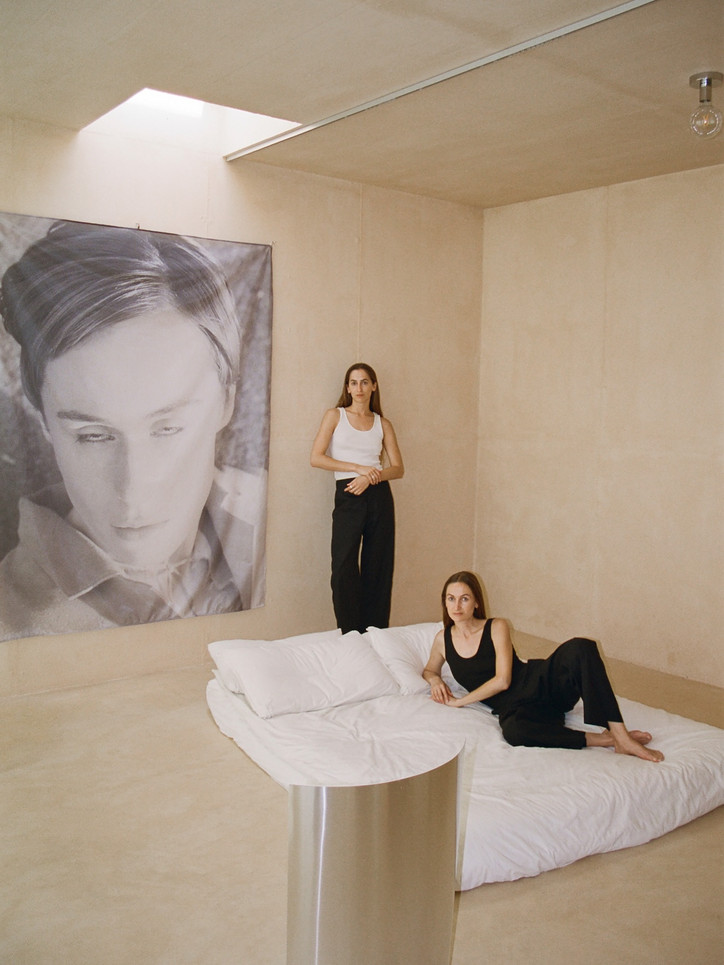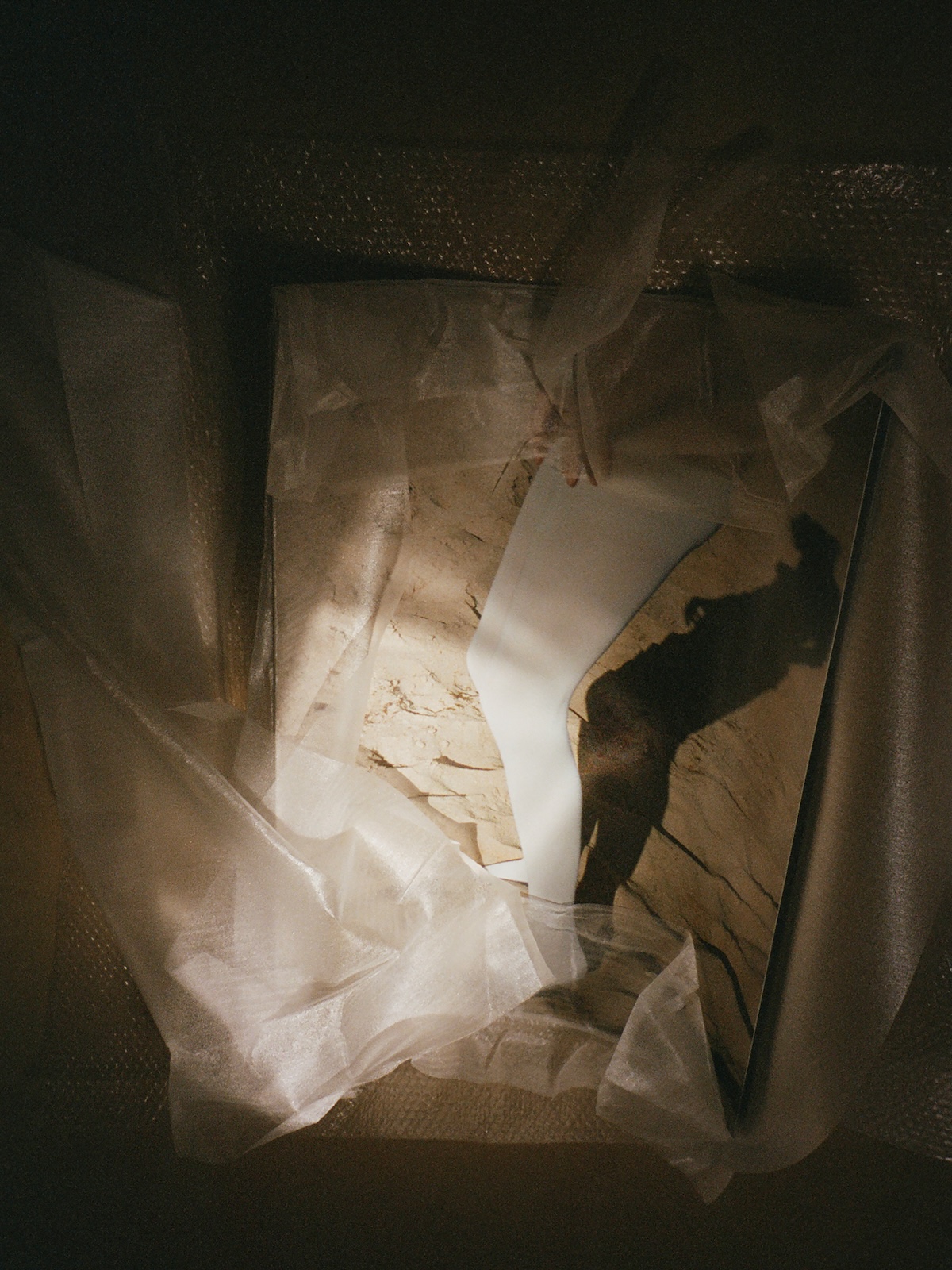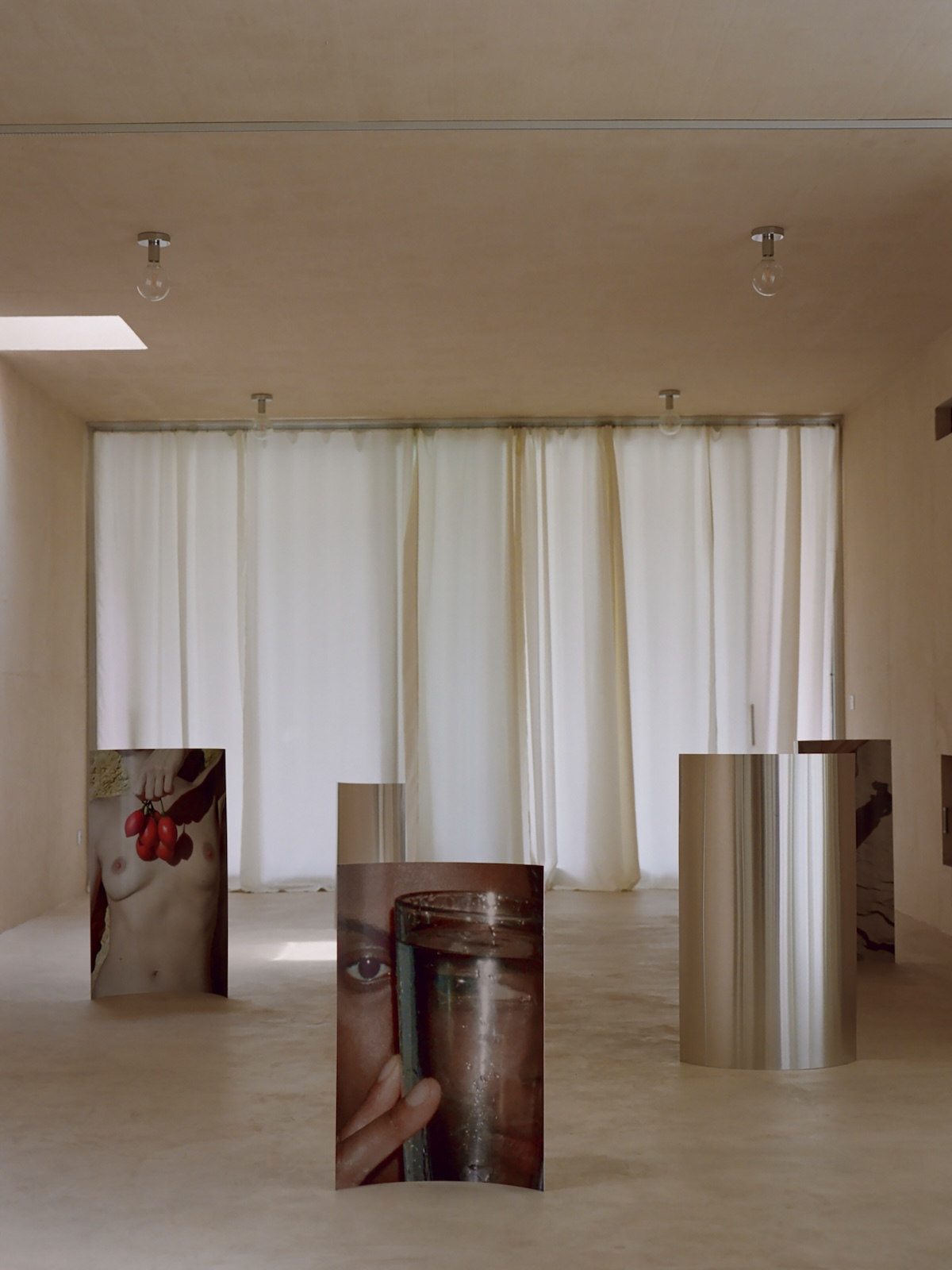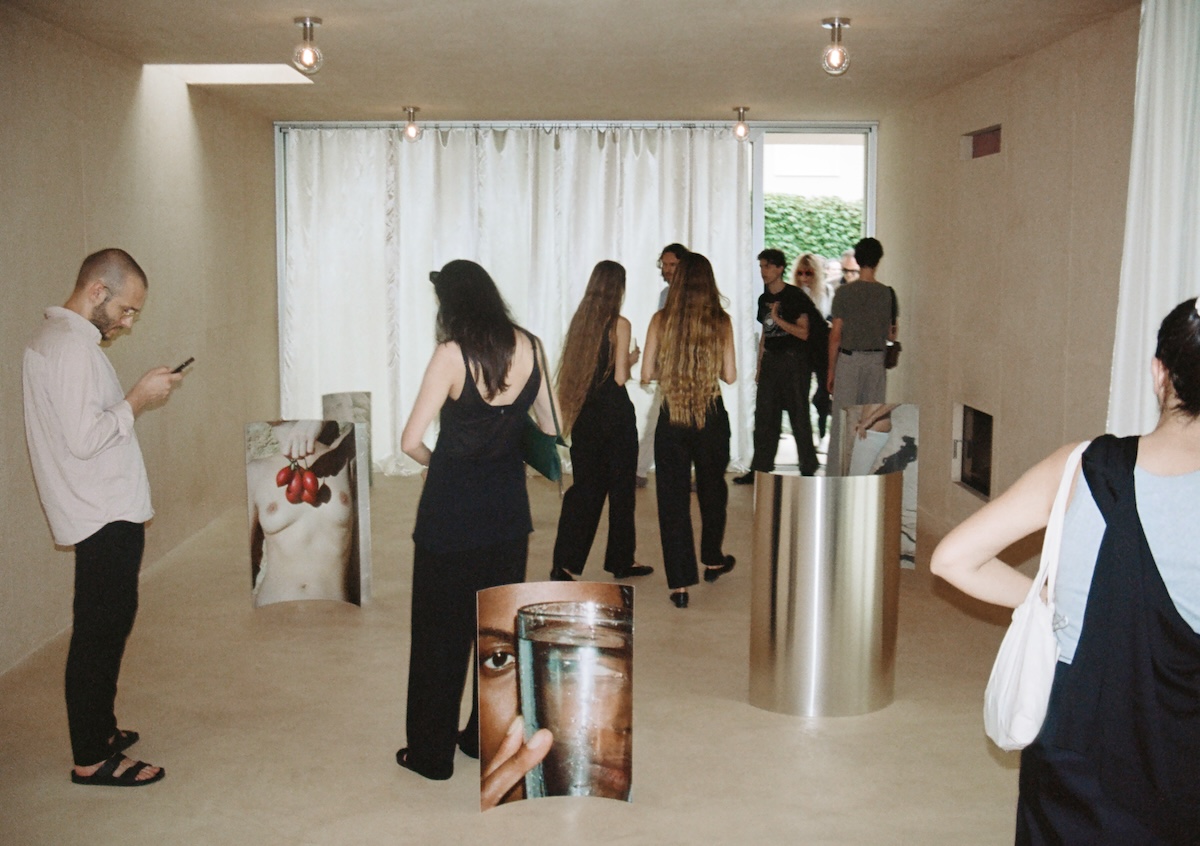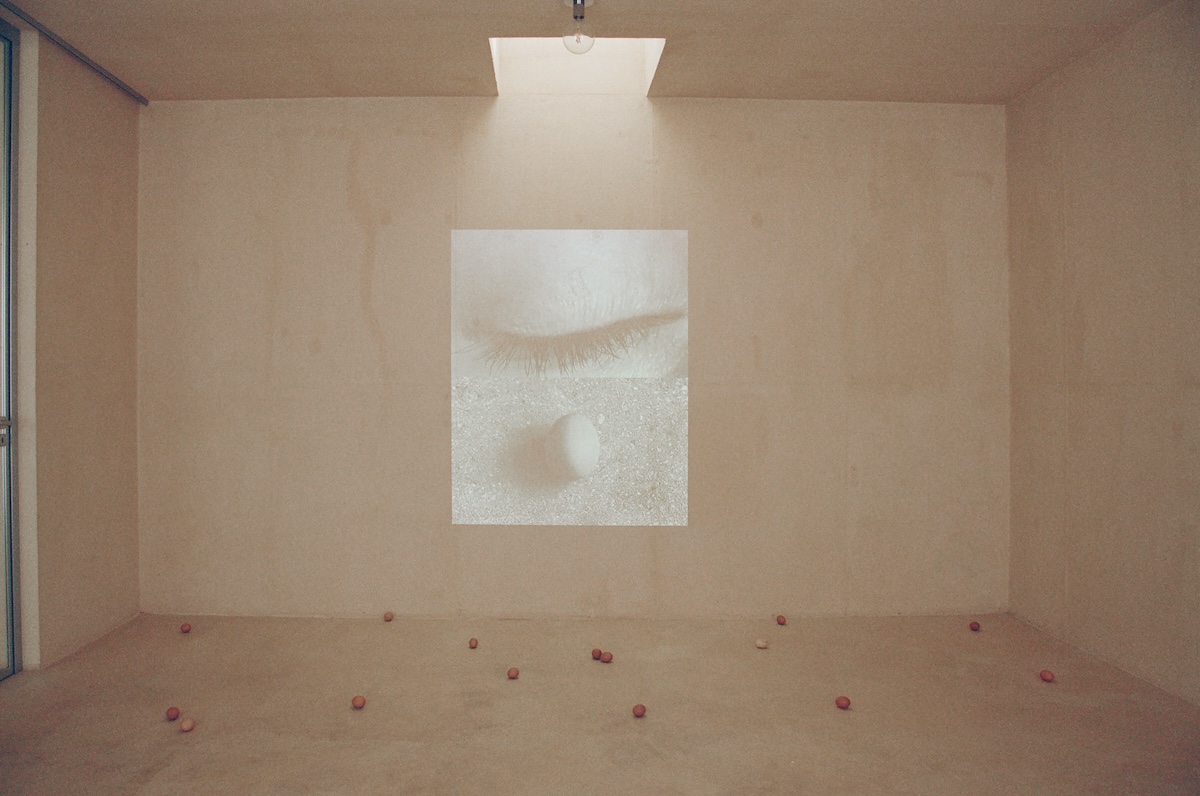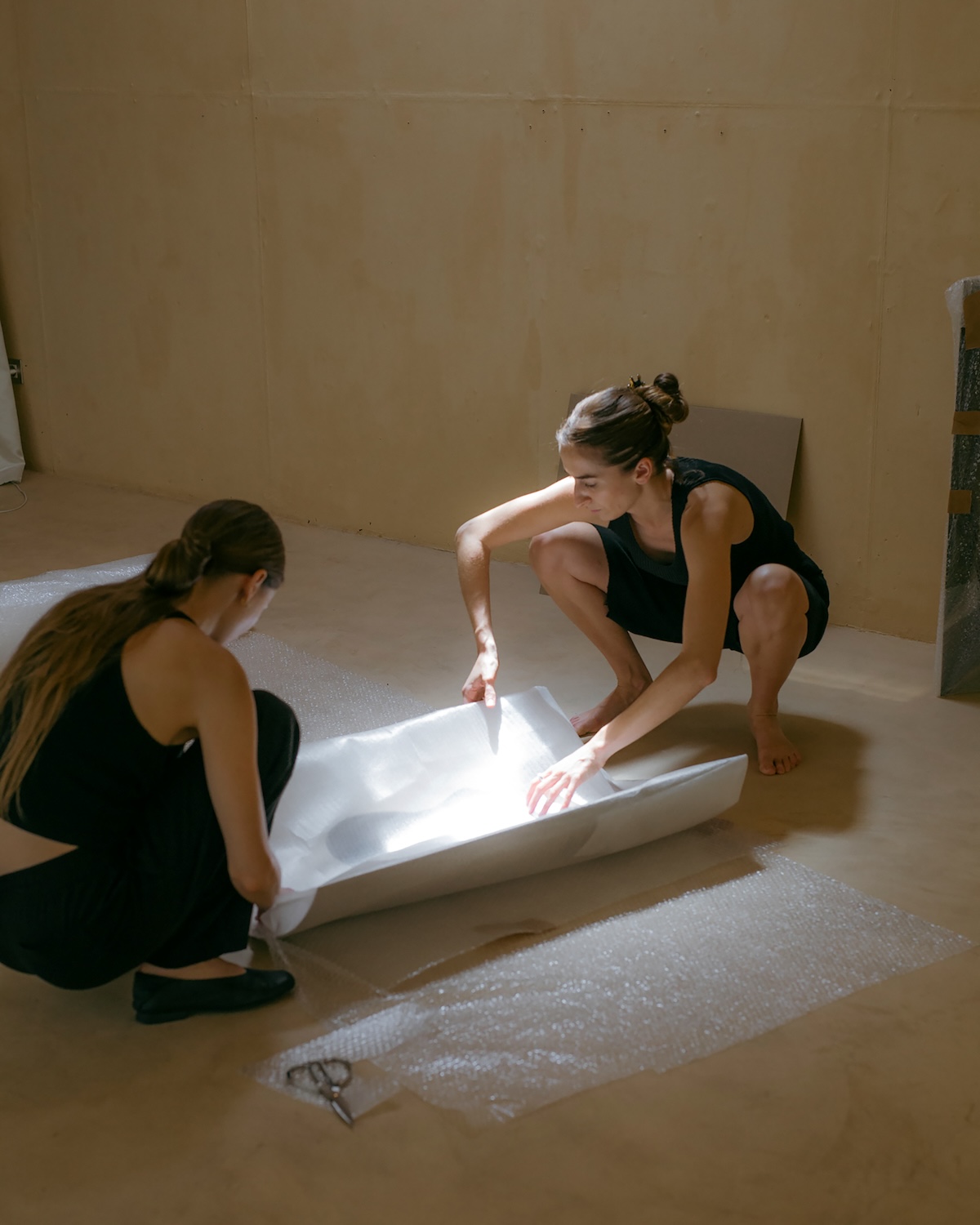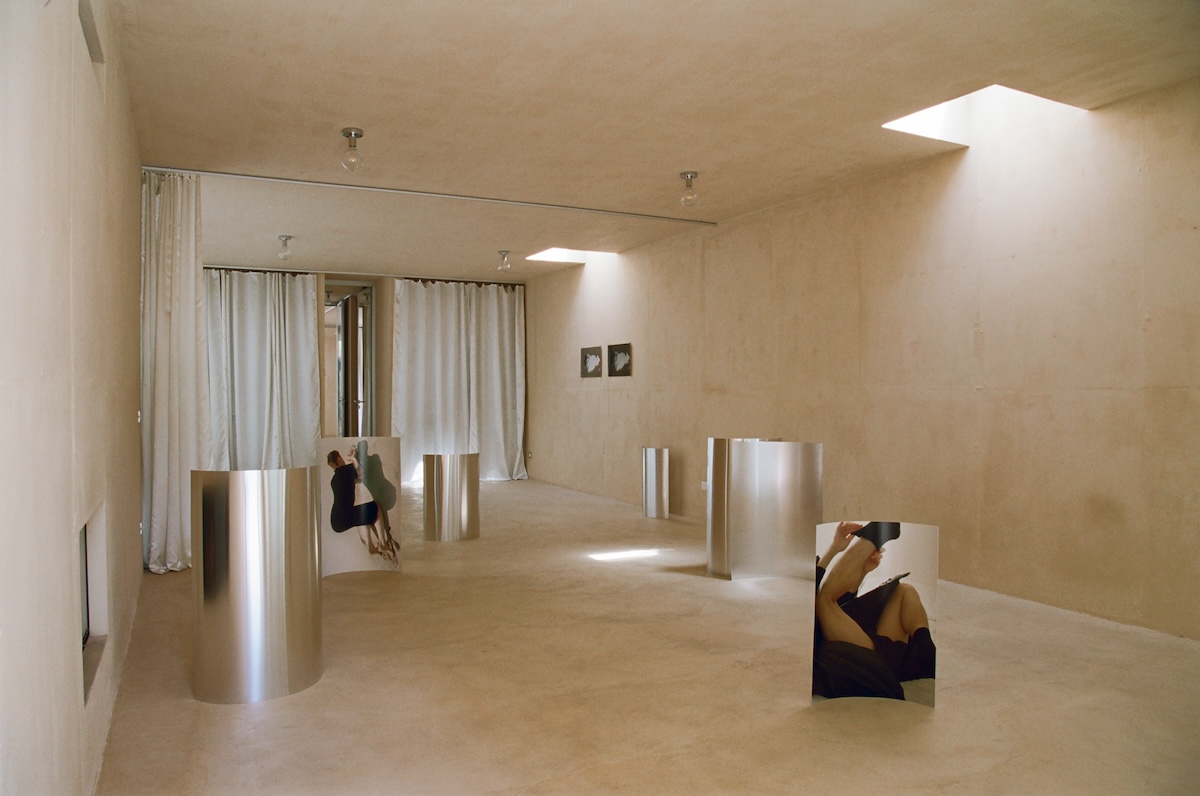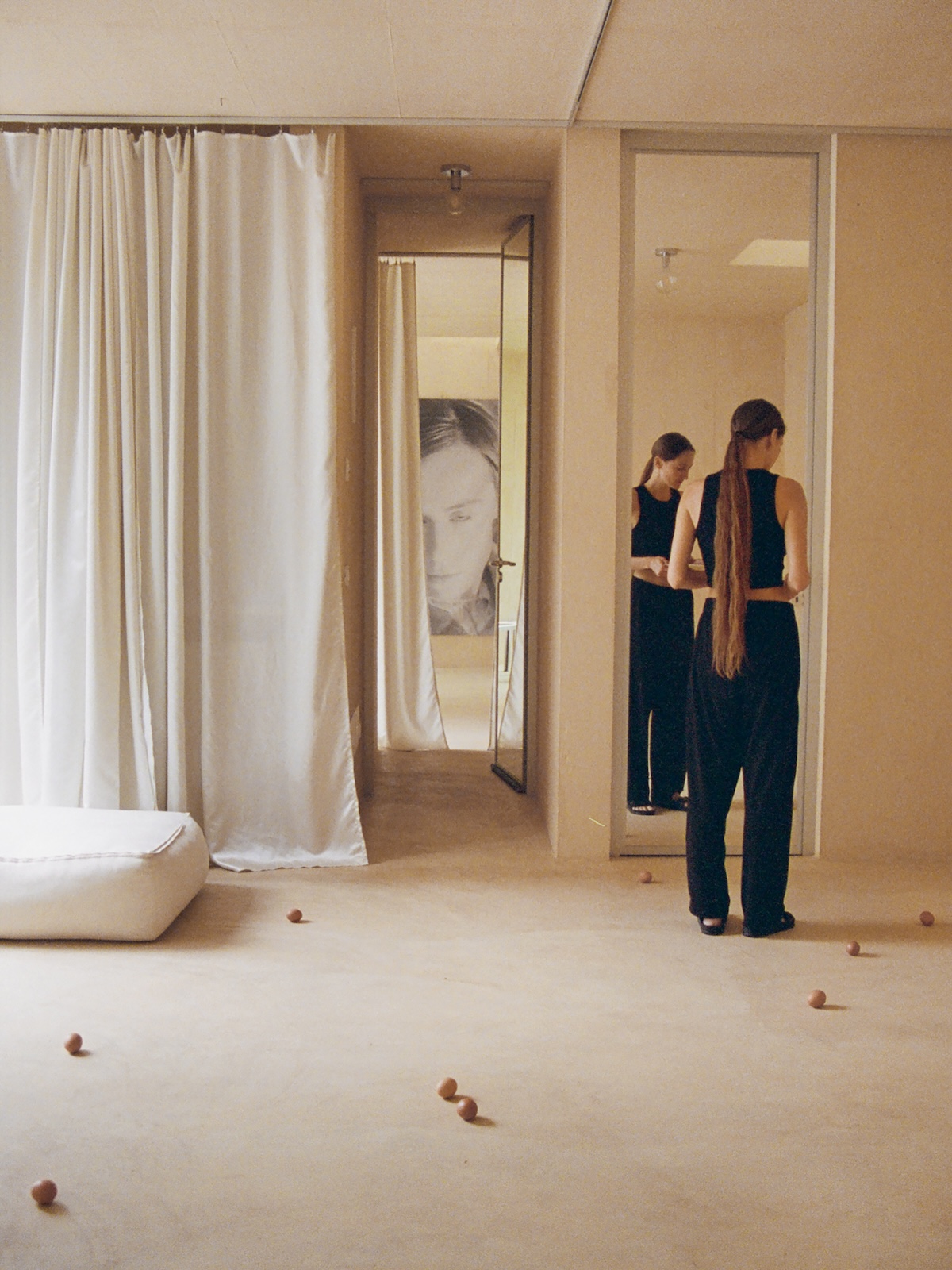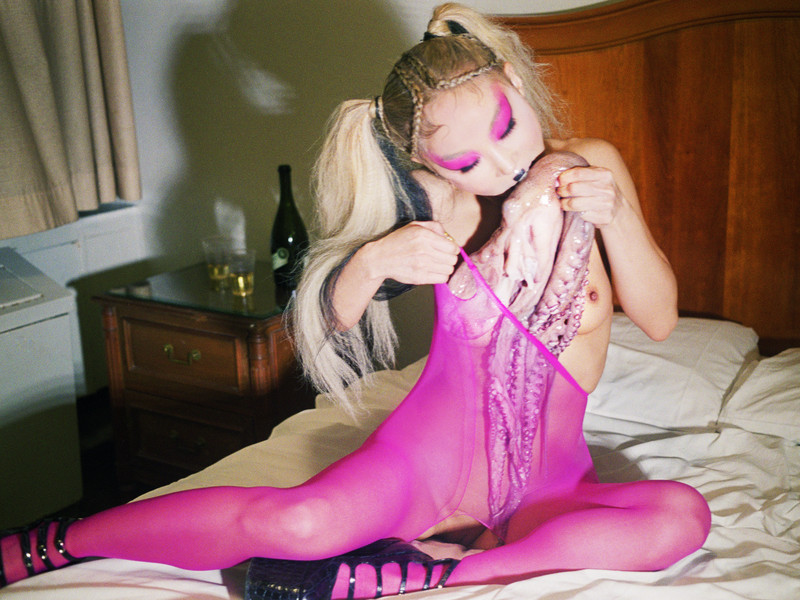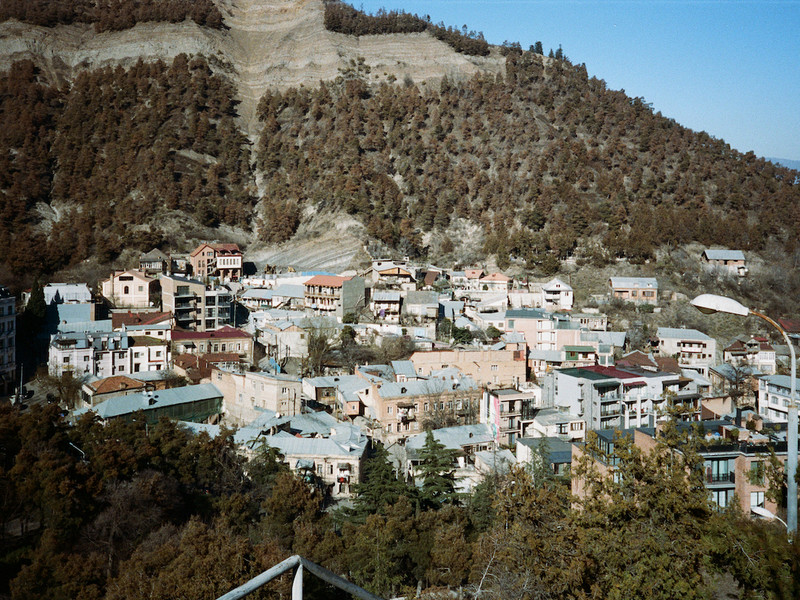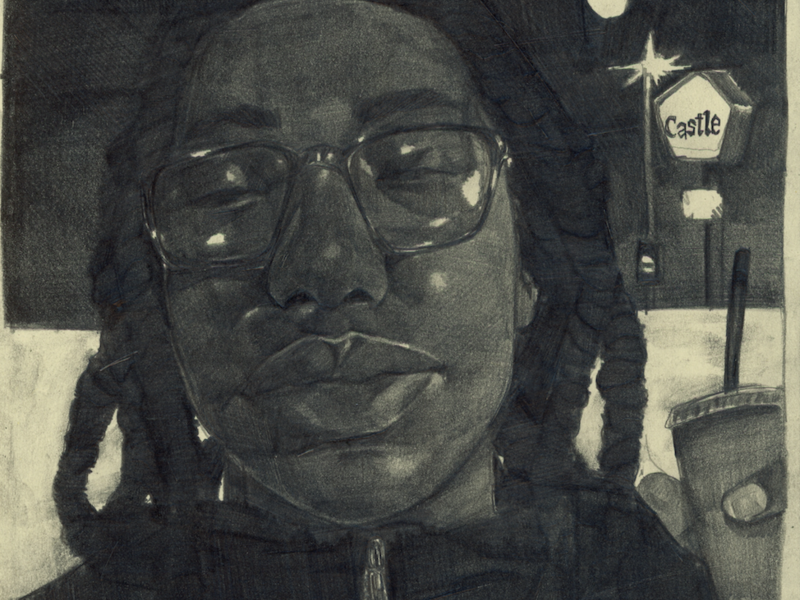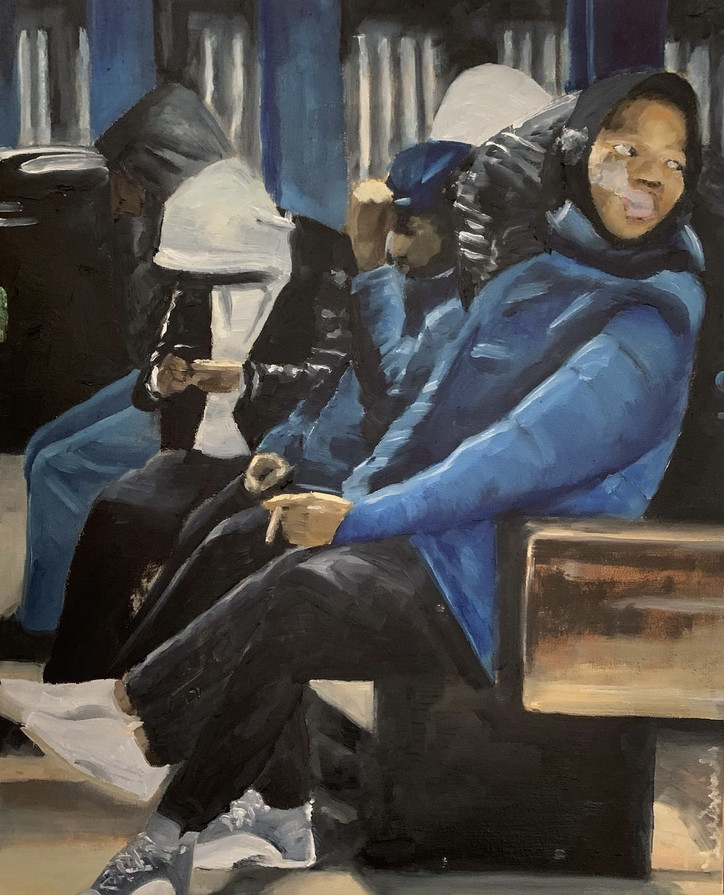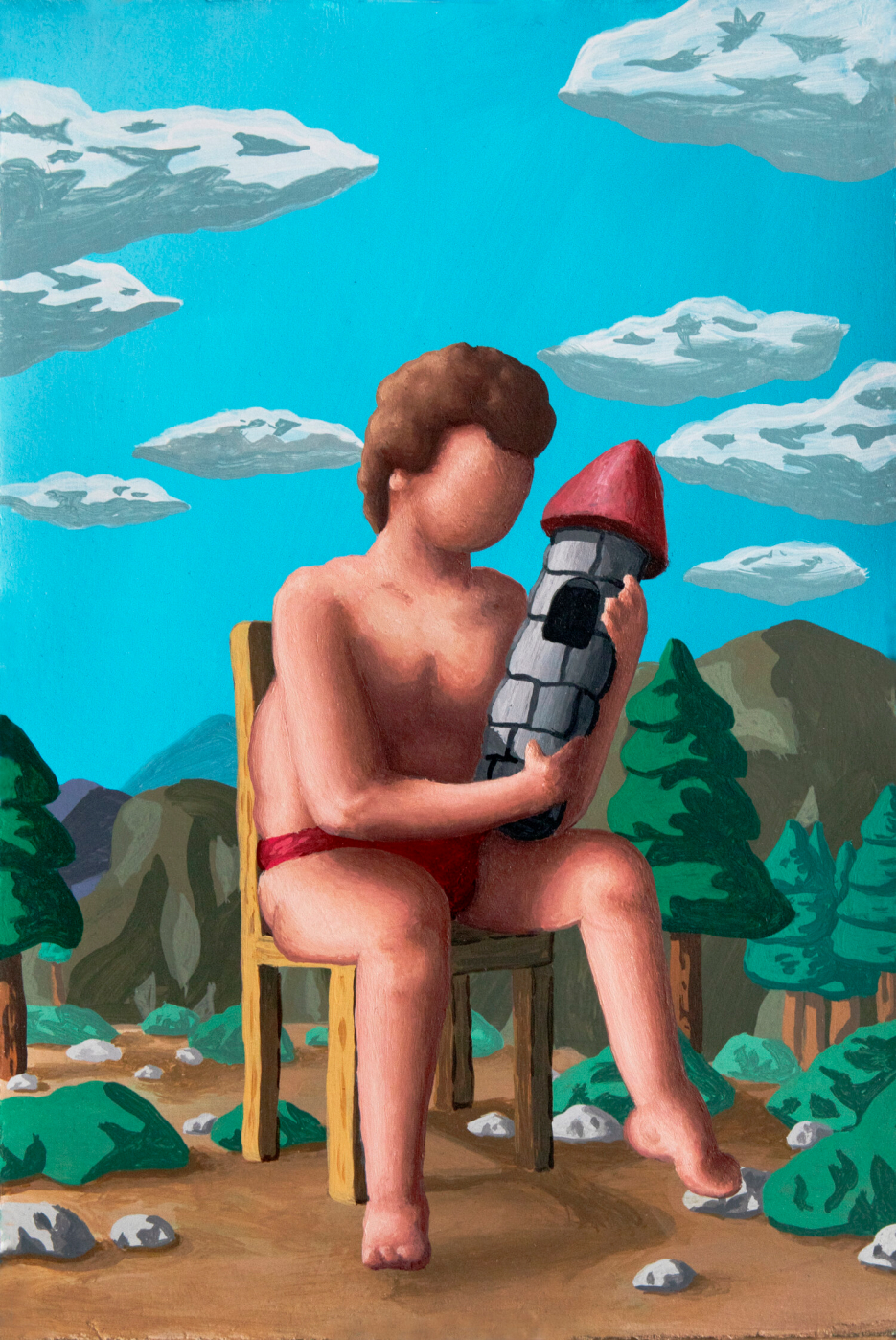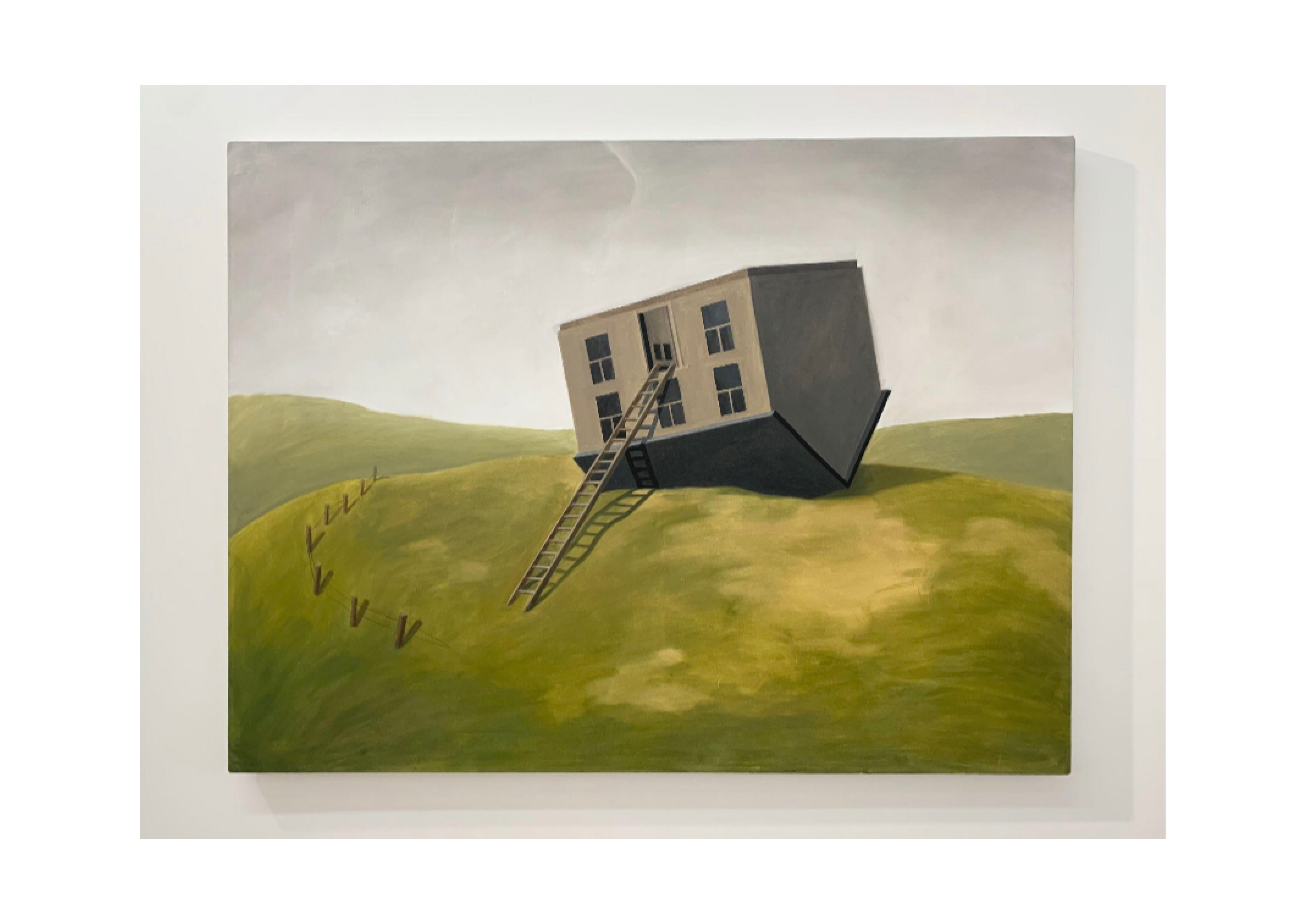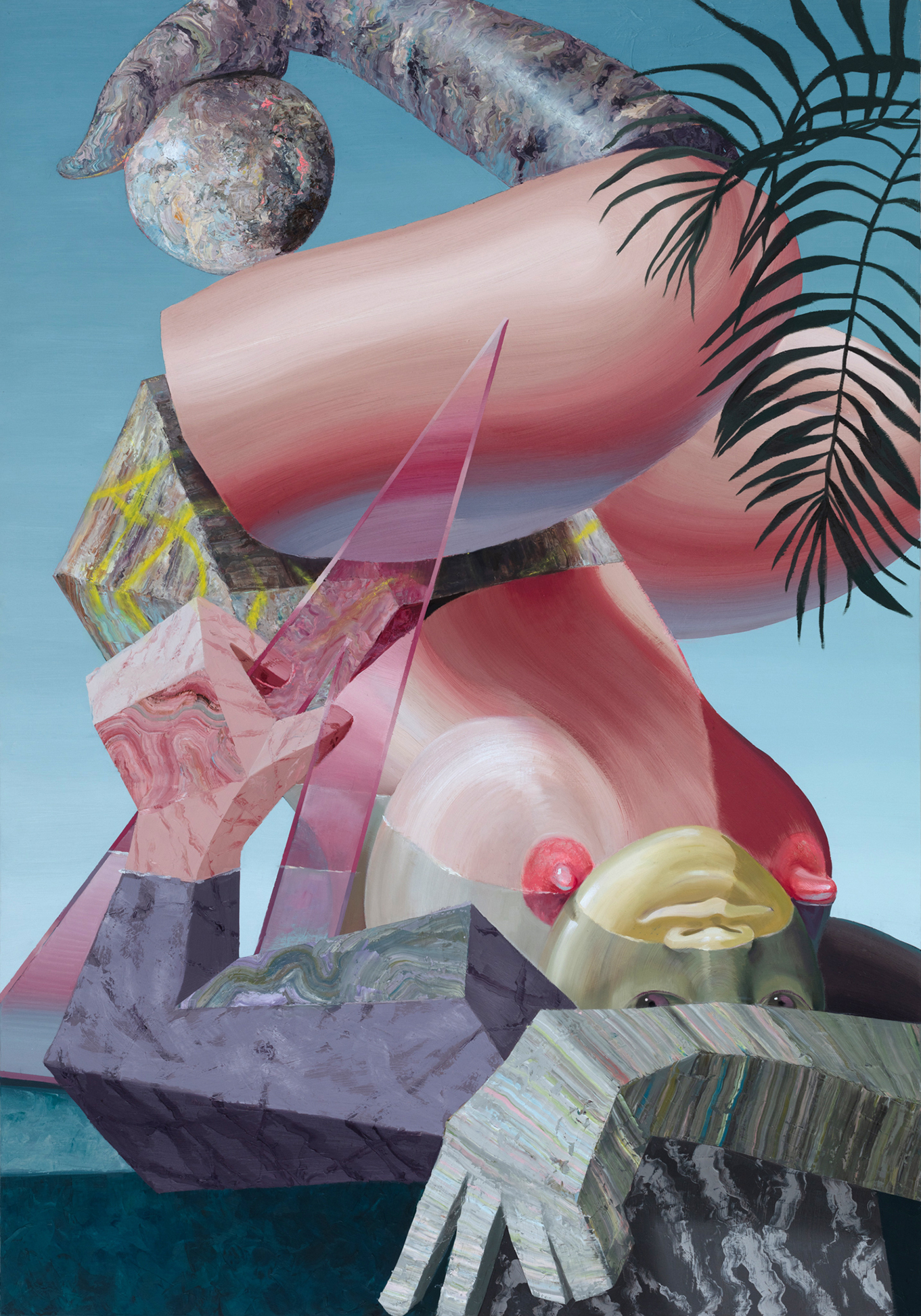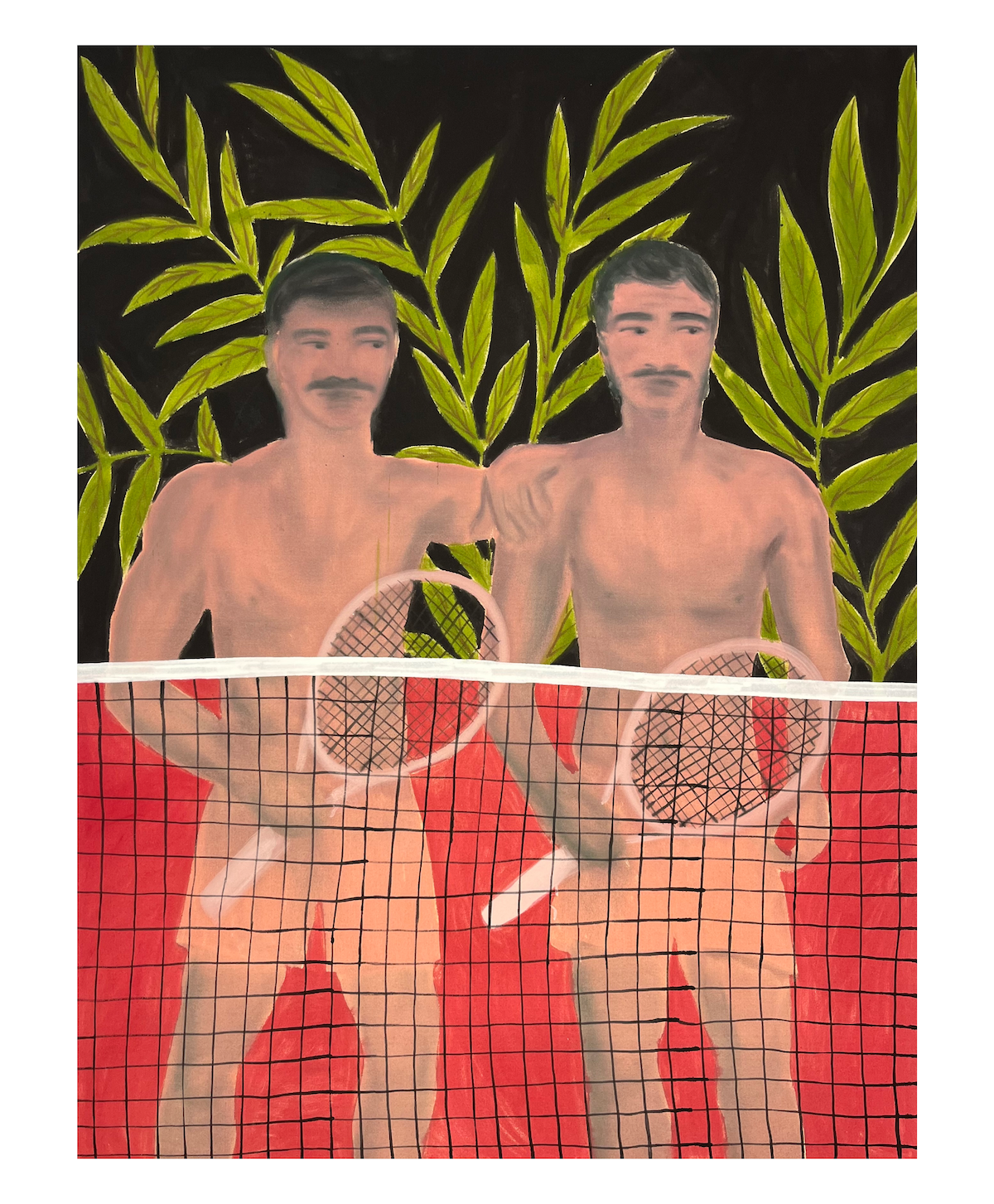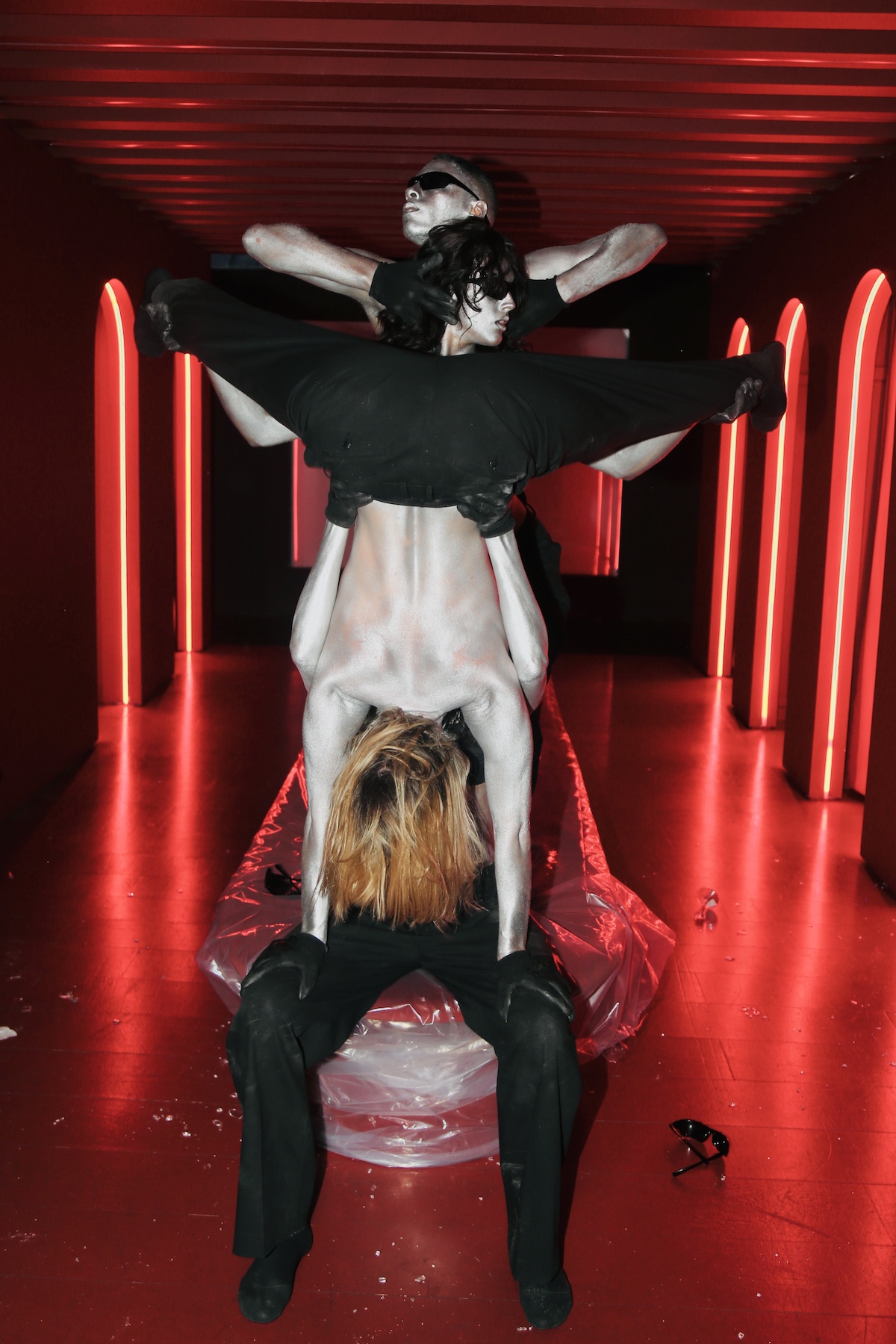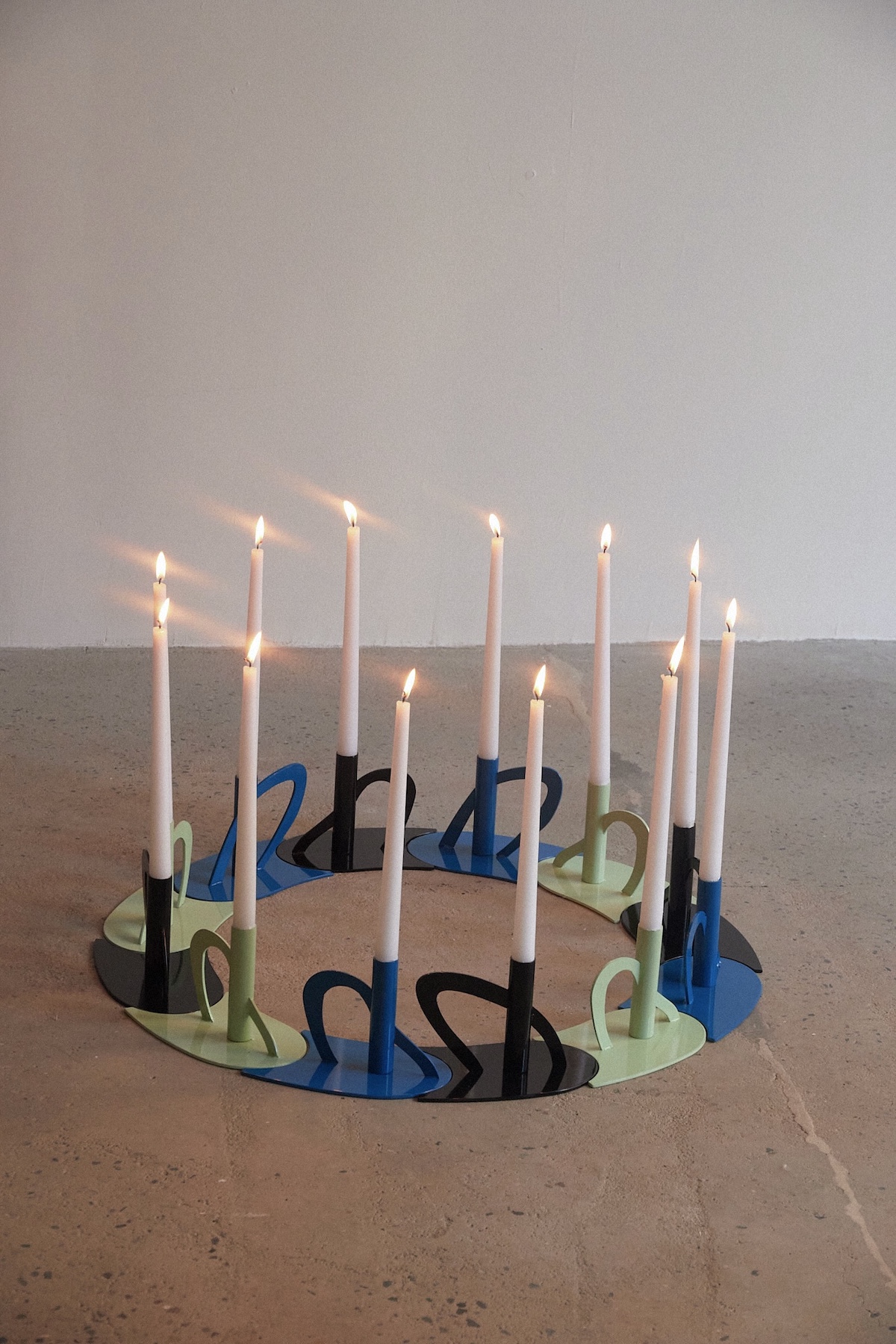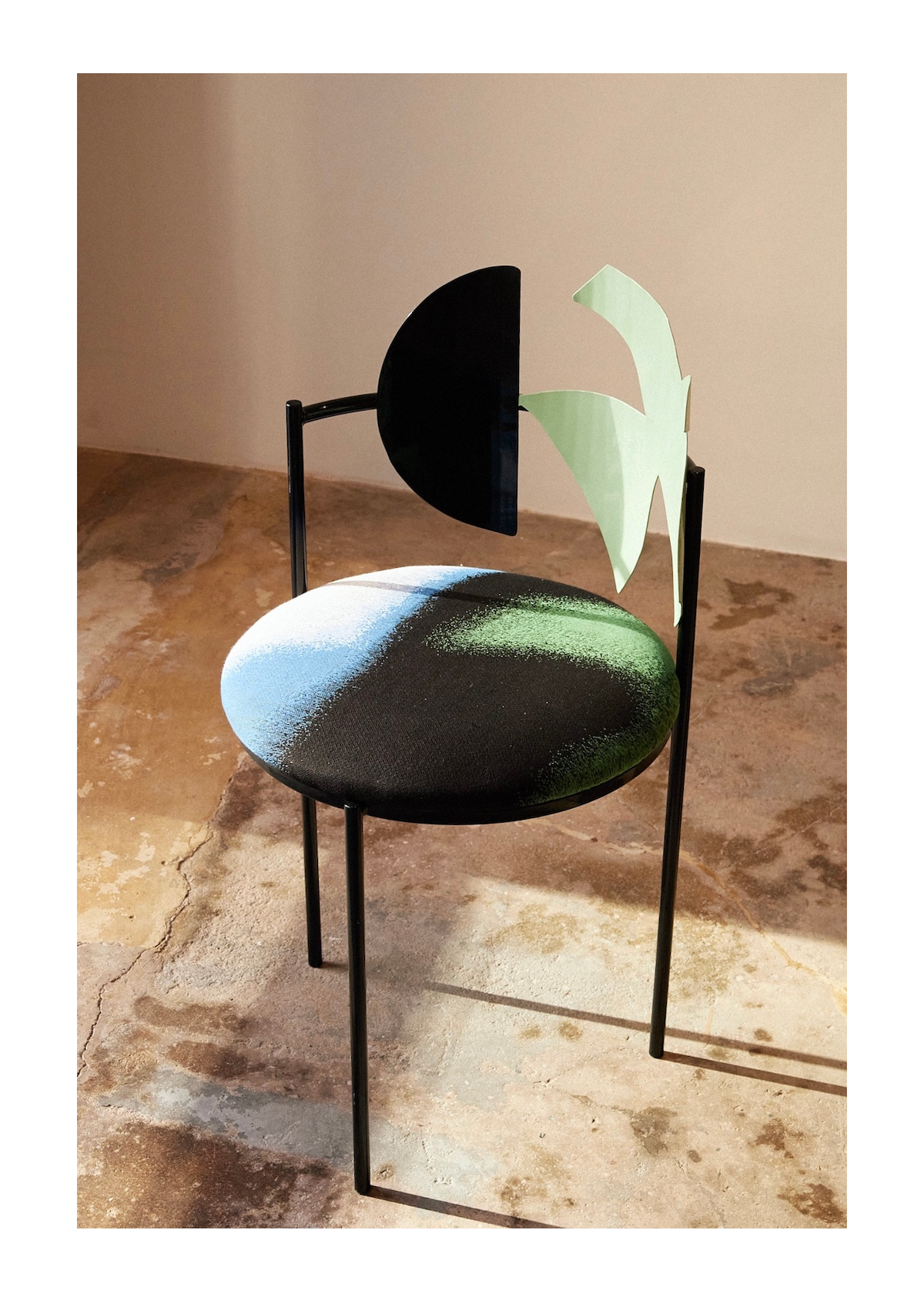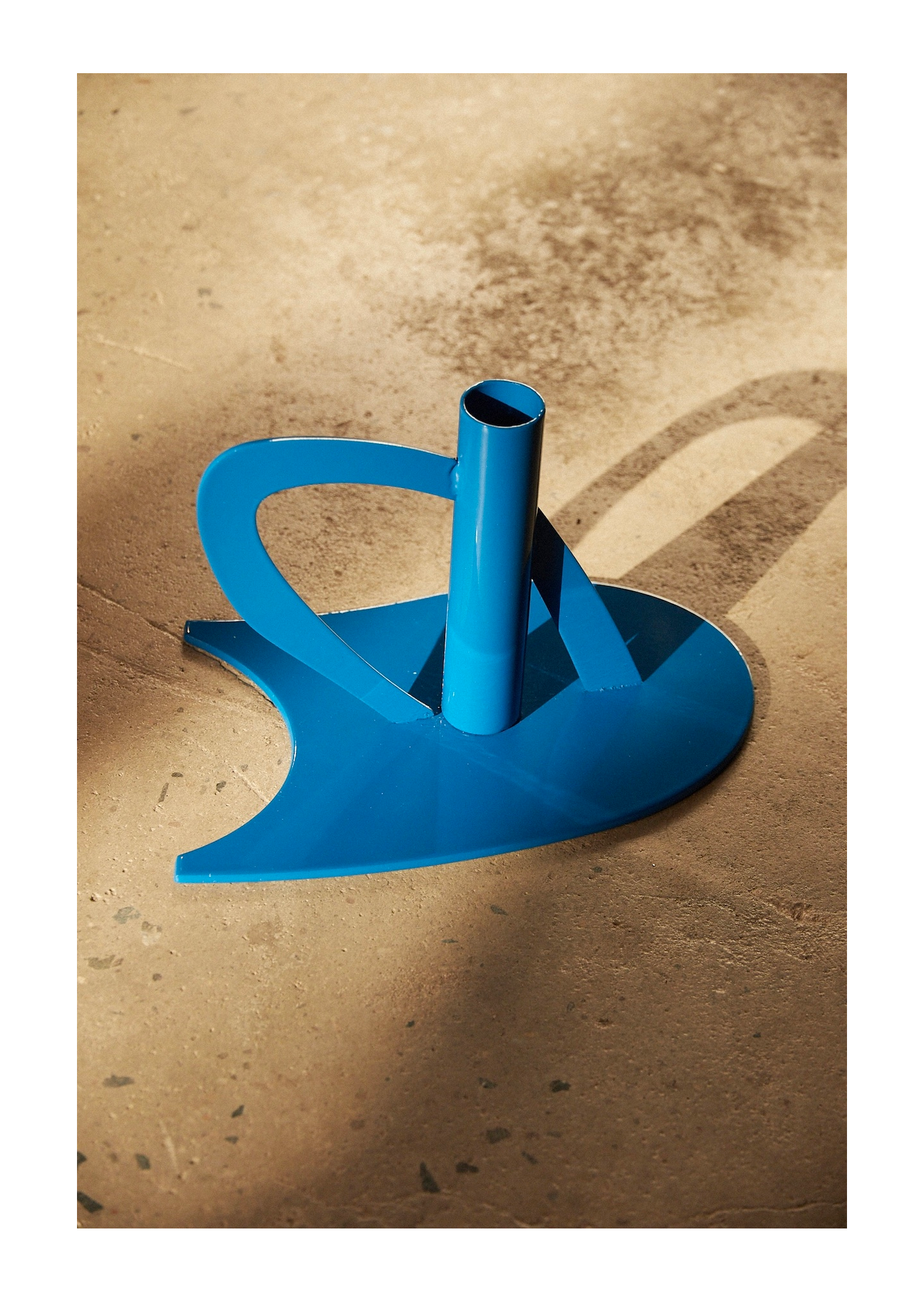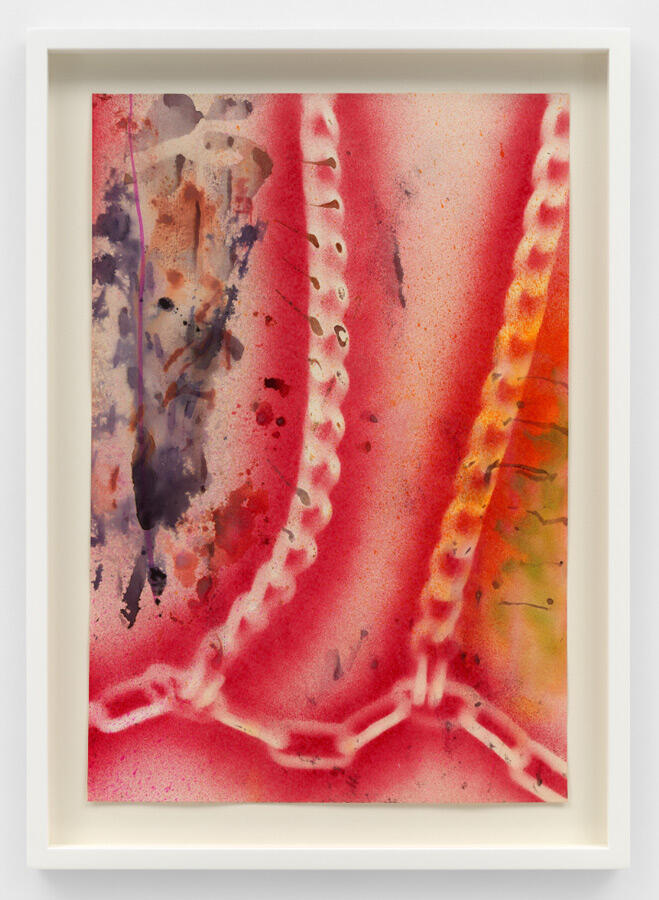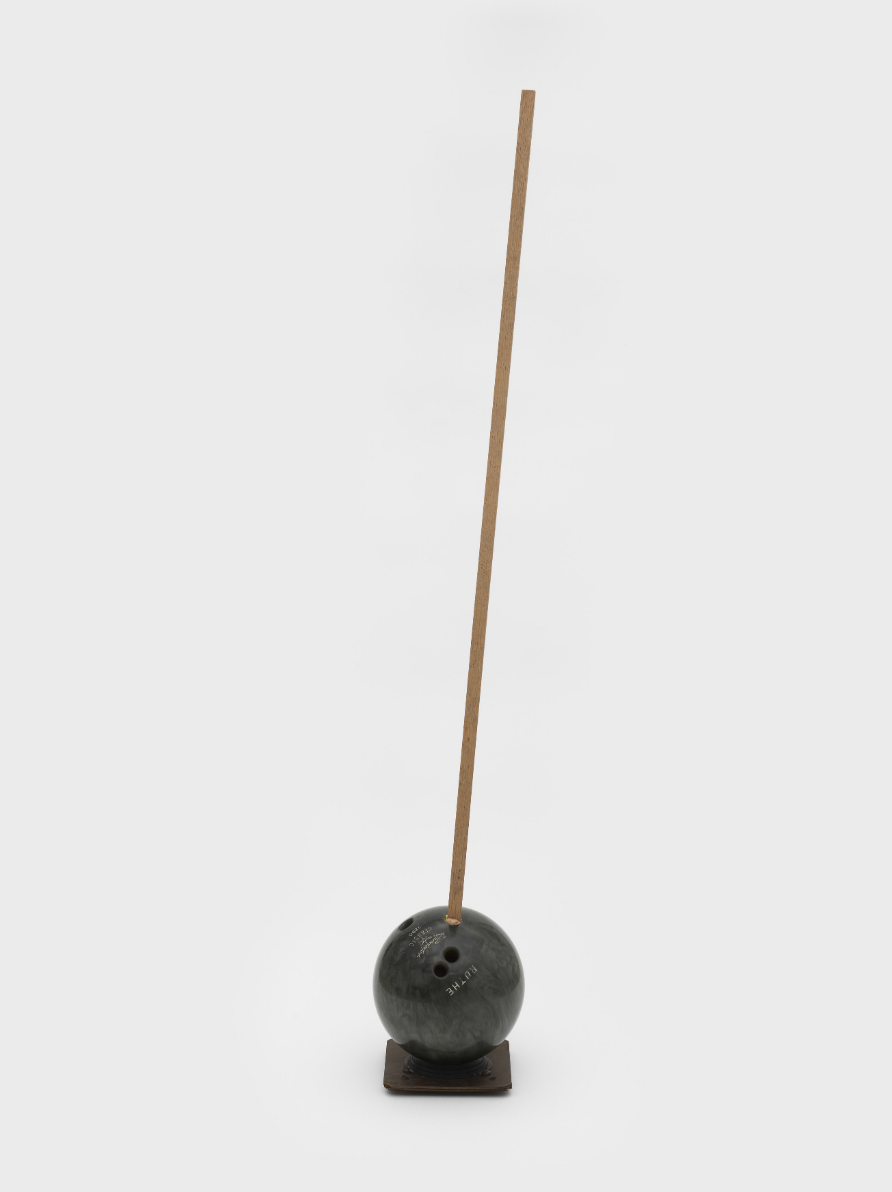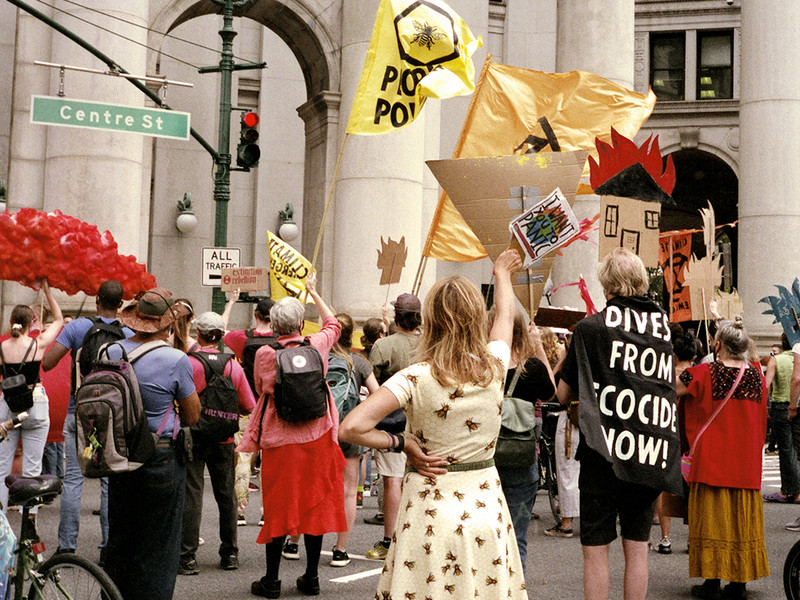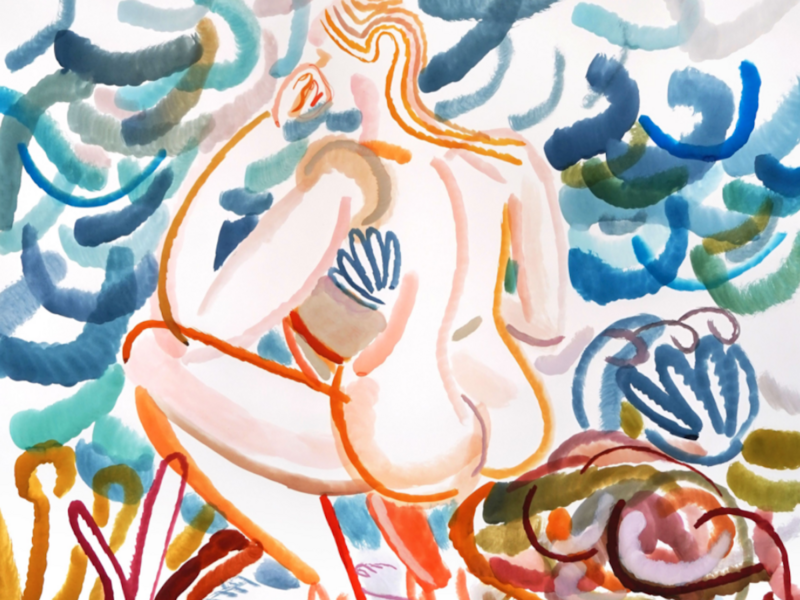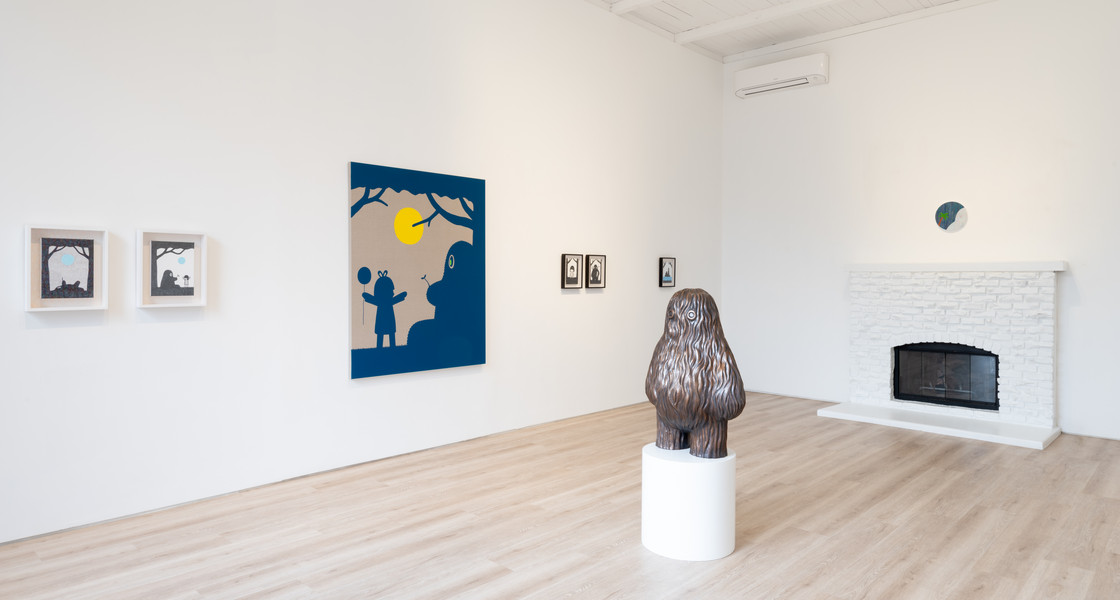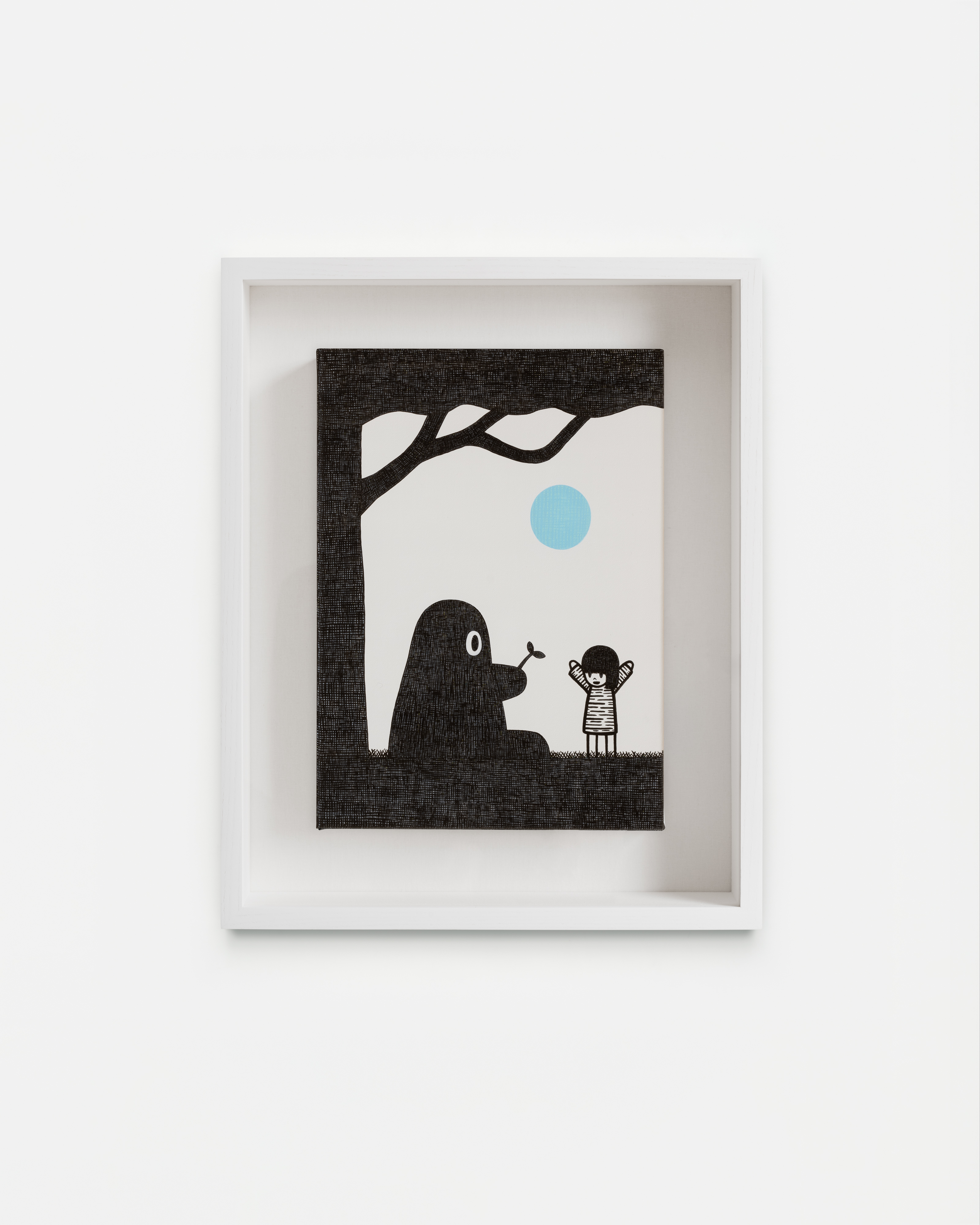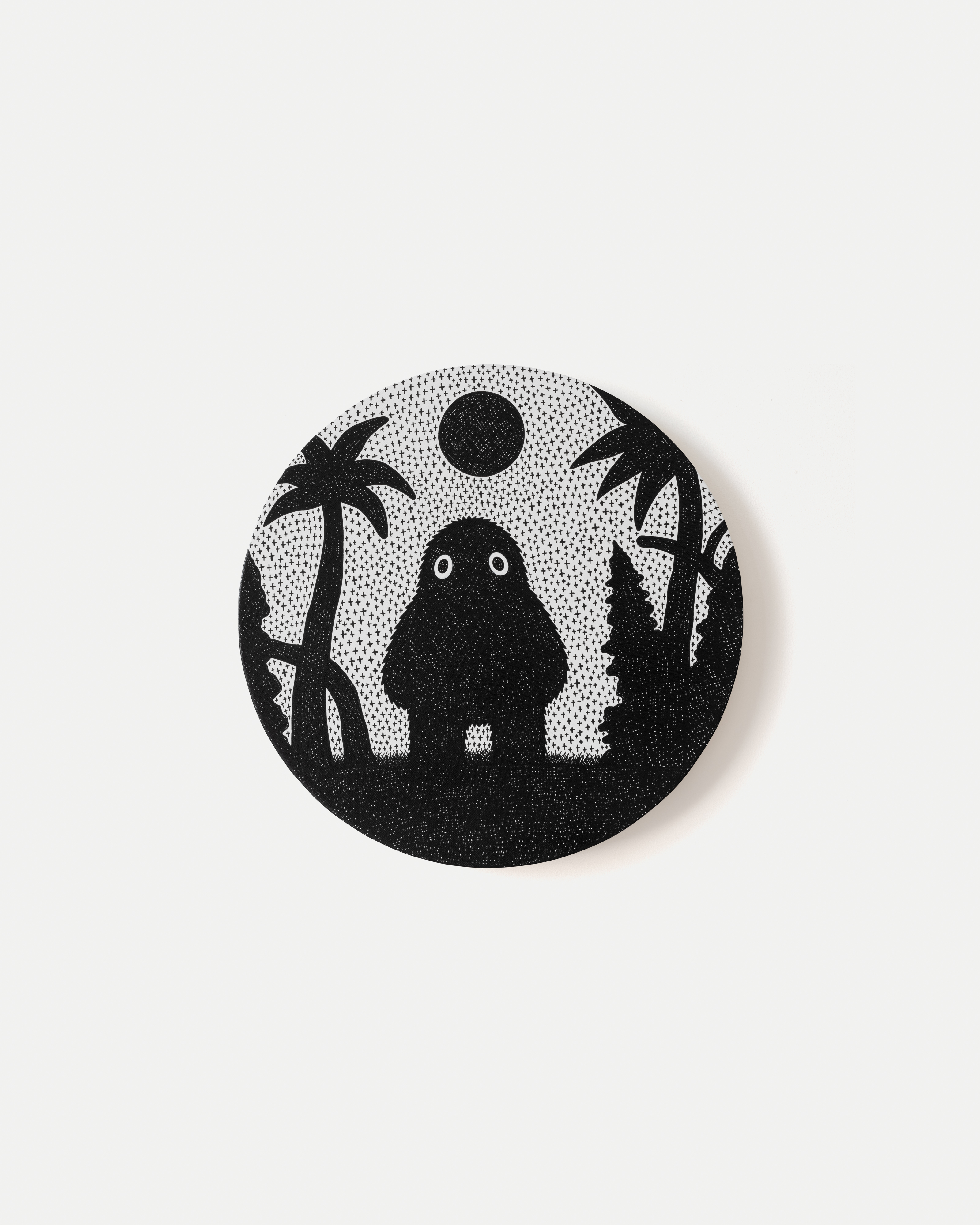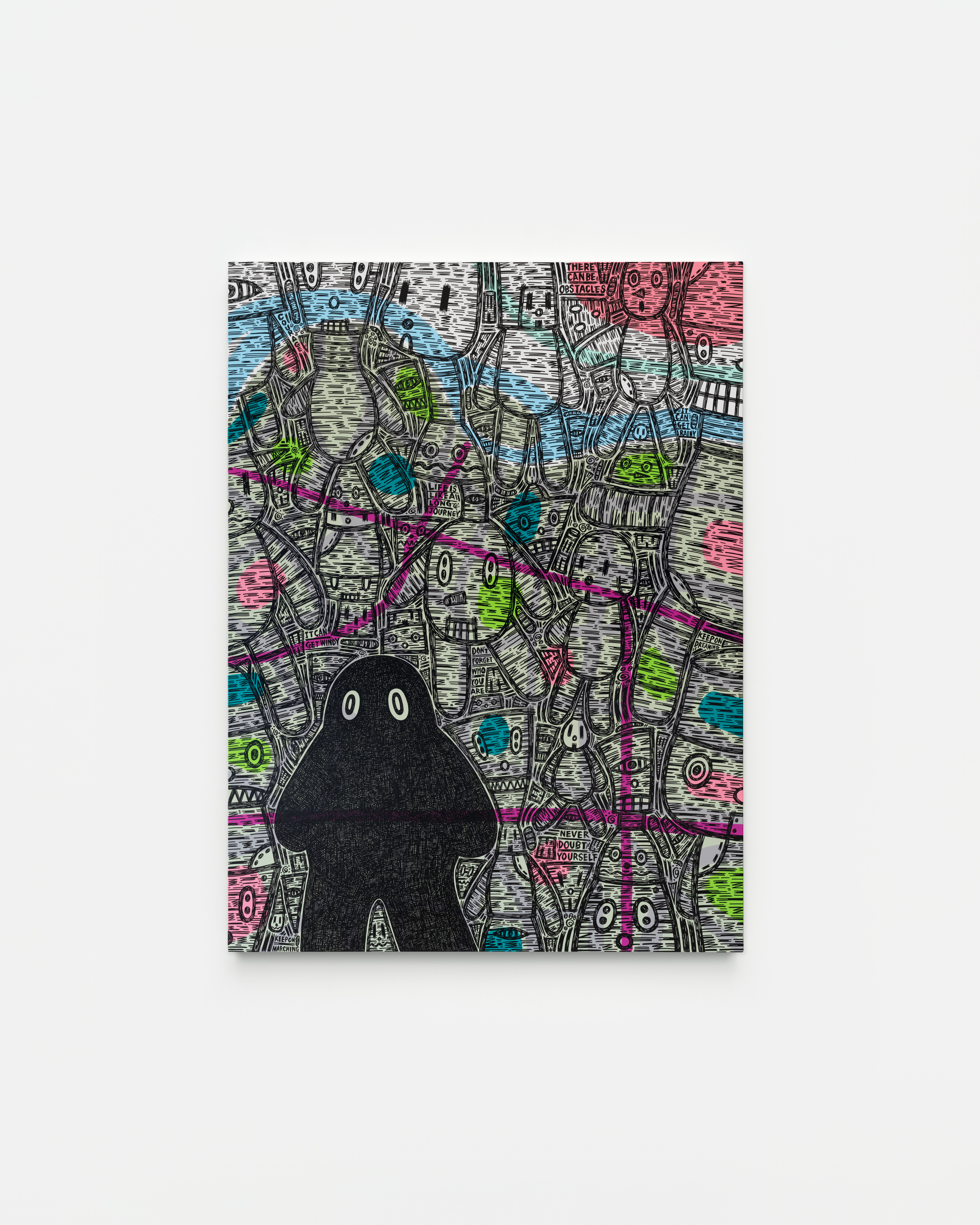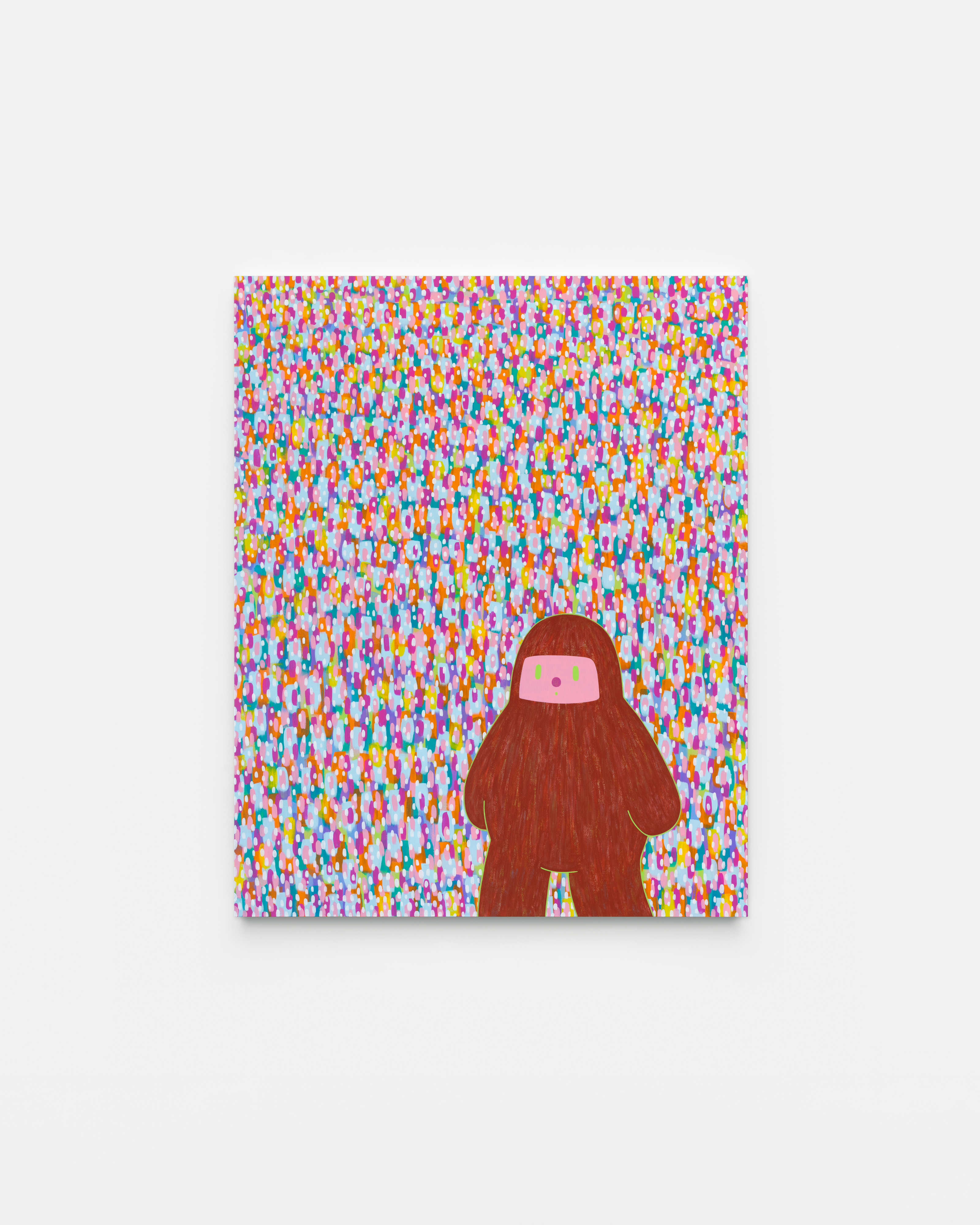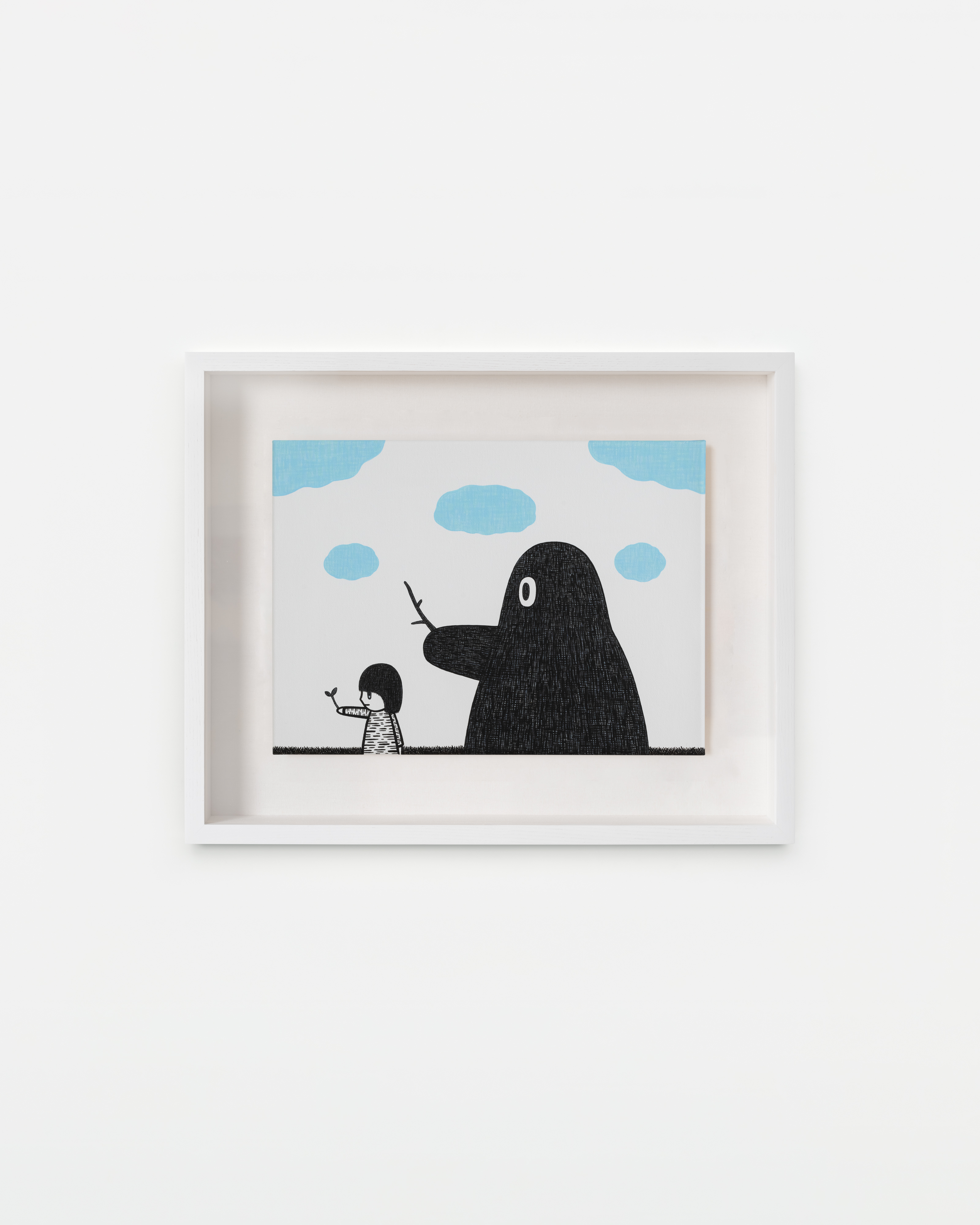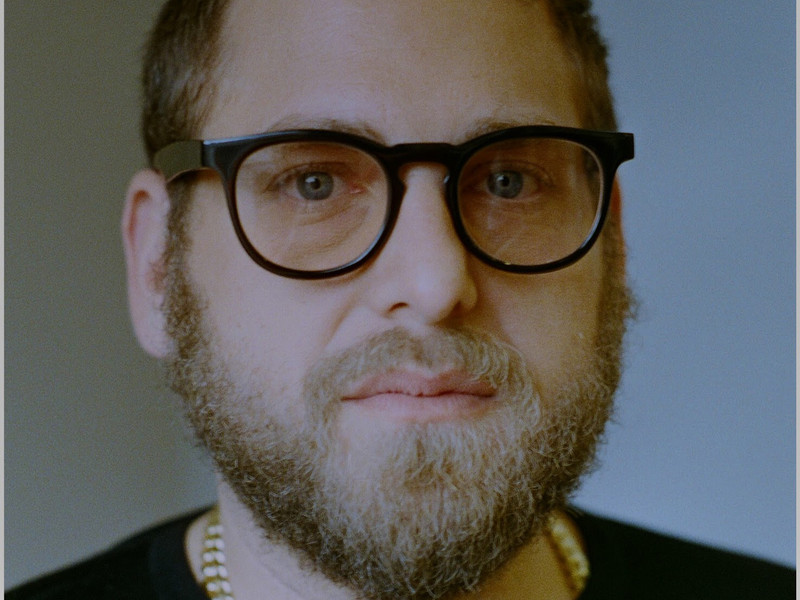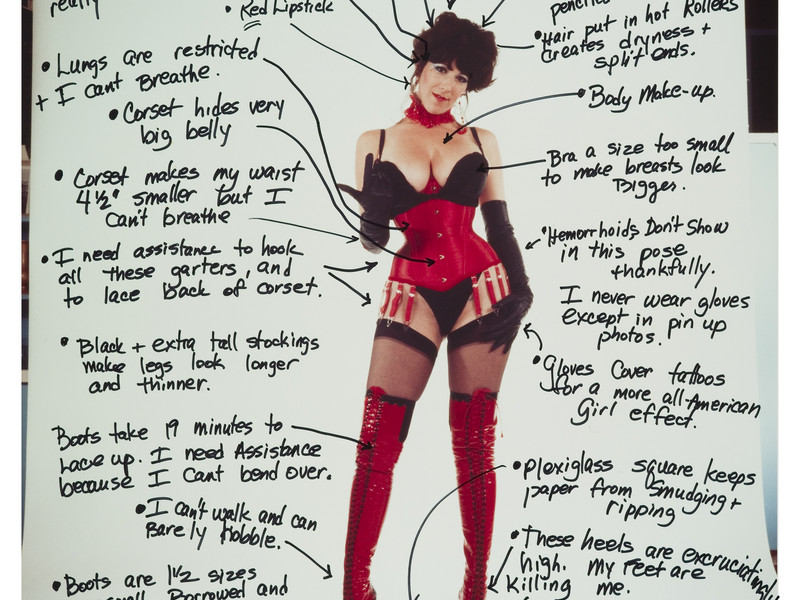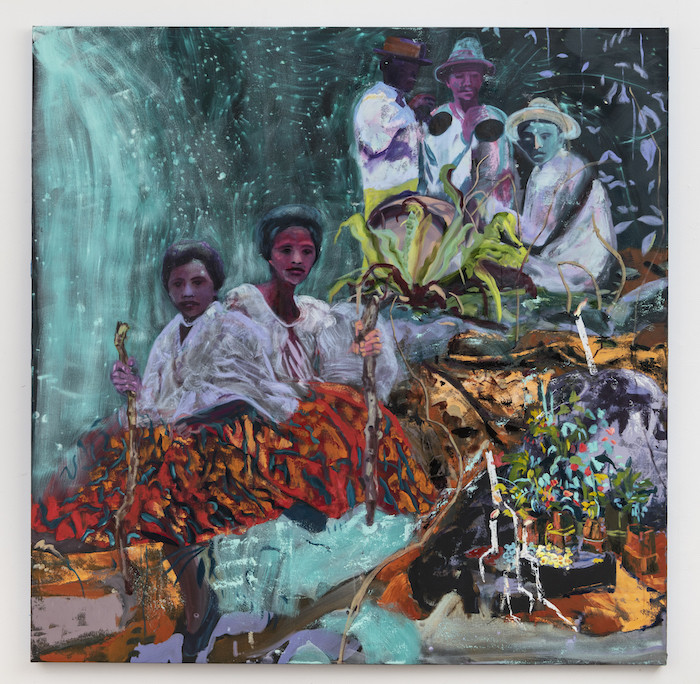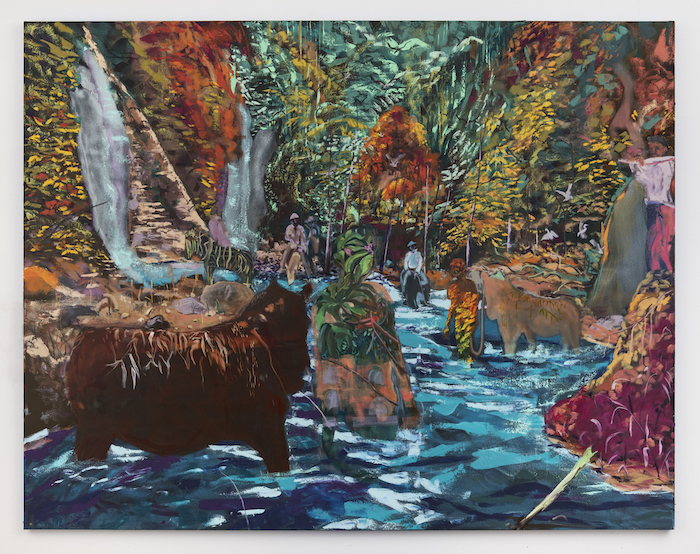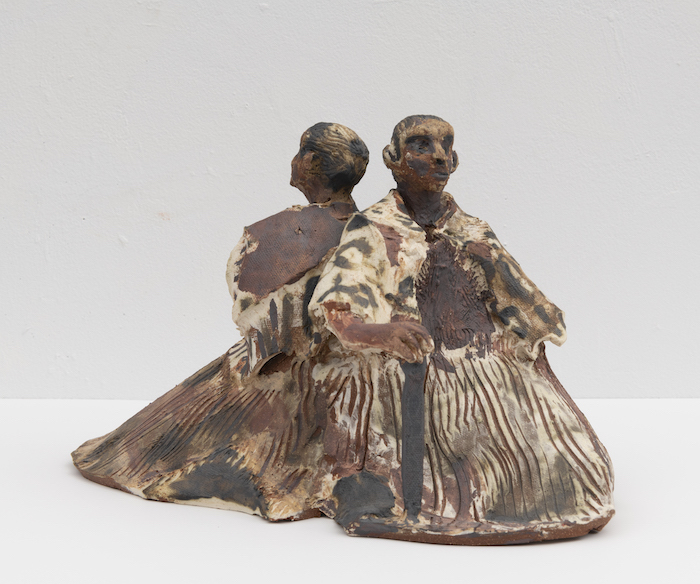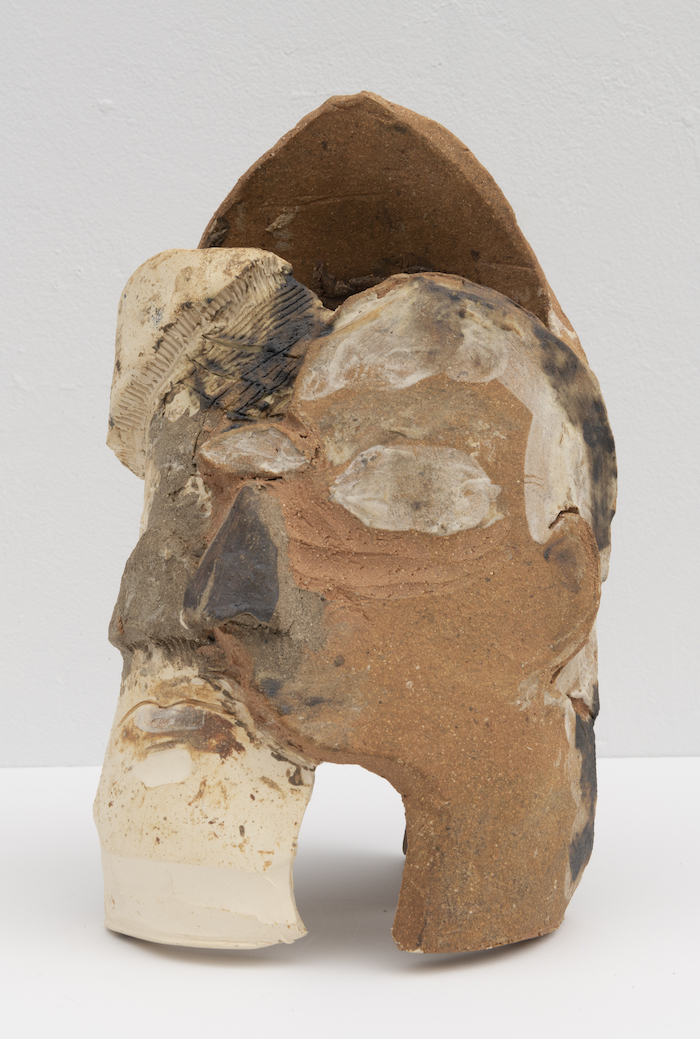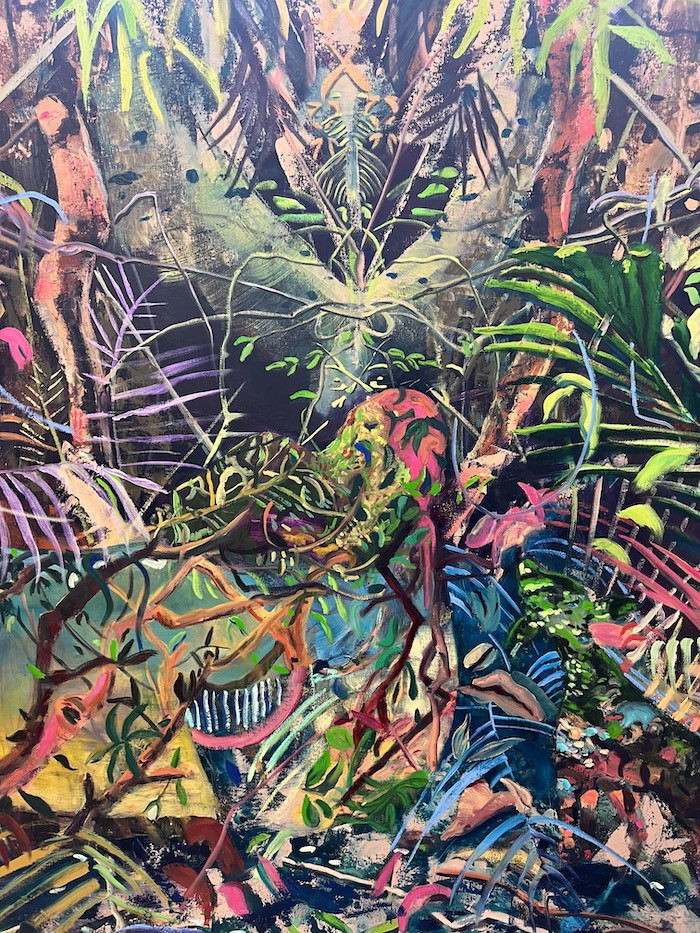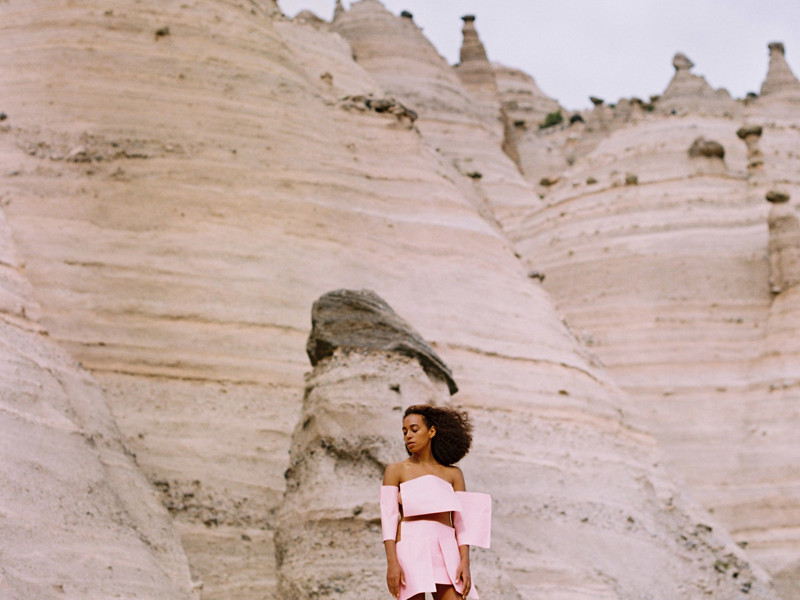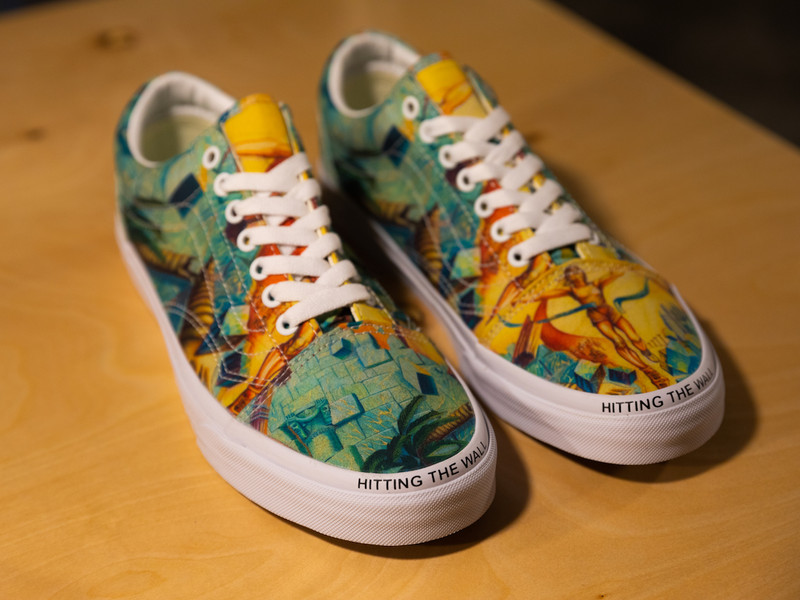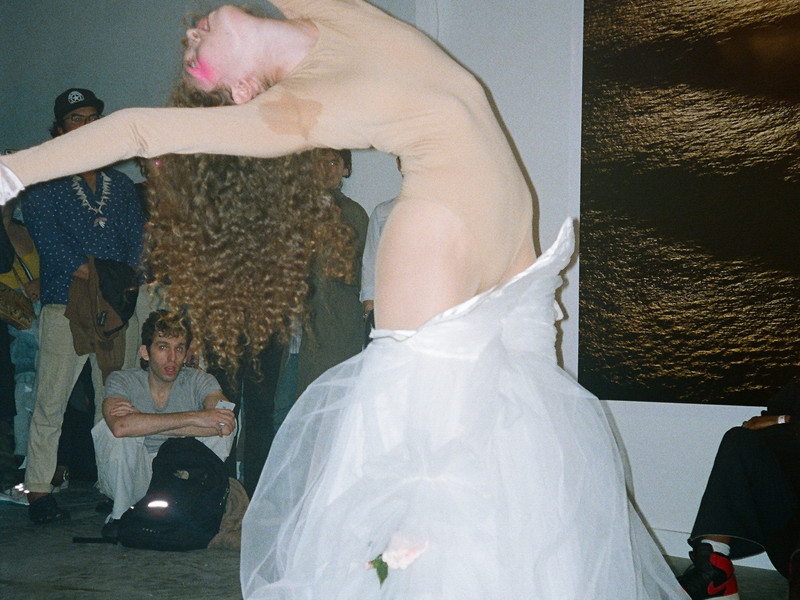office stopped by Cruz’s studio to talk about inspiration, their identity, and how all of this manifests into an explosion of color on their canvasses. Cruz’s current exhibition Days Later, Down River is now showing at Monique Meloche Gallery.
As your work is heavily rooted in your Filipino identity, what are some aspects of your heritage or upbringing that you aim to share with your audiences — perhaps intricacies that the general public does not know about your culture?
I try not to think about what people will think of the work, but some of the things that I find exciting when I'm making the work — and I hope that comes through in the work — are some of the more spiritual things that I'm learning about these days. I think now that I know the history, which took me a little while to learn, I'm starting to learn deeper concepts. I have a mentor who's like my auntie. She lives in Queens and teaches me about Filipino spirituality. She's the best. There's this idea I always reference that means 'I see myself in you' or 'I see myself in the other,' so we really have this shared connection. Sometimes going through the archives feels really intense. So I think having that kind of protection is special. There were all these stories when I was growing up about magical amulets and how they would protect you. I just love those kind of stories.
I have an altar in my studio as well. This is a talisman that my auntie gave me called a "kamay" plant, and kamay means hand. I think there's something deeper than what we have been taught — at least for me, about my culture. A lot of those stories have been somewhat buried or attempted to be erased. So for me, that's what I feel like these paintings uncover in the process of looking at these images and in the process of talking to other people who have experiences from these locations. In the artistic process and the painting process, I don't quite know where it's going to go, but when it goes from a photograph to a painting or to a sculpture, something changes. Something becomes revealed and I don't know if I can verbalize what that is, but I think it's special.
I think there's something really interesting that you touched on. You discuss how these ideologies and spiritualist thinking are things that you weren't super immersed in until you started doing this research and going through the archives. And then I have to imagine that there are a lot of other people who aren't super familiar with that history and these backstories. It's really interesting to see your work and to see that it is so deeply inspired by these archival photos, but then you are also marrying it with colors that are so vibrant. It's meshing this world with that spiritual world that you talk about. And you're adding information to these old photos that we don't get from just looking at them. What originally sparked your interest in the visual arts in general?
I got into art through photography. I took a black-and-white photography class in high school and my dad gave me a camera. He was into photography when he was younger so I picked it up as well. I had a pretty awesome photo teacher — Mr. Mantis. Learning from him was the first time that it blew my mind to look at a photograph. At first, you're like, 'Oh yeah, it's three dudes.' But then the longer we looked and talked about it, all of this background suddenly appeared. It was actually a photo about the notion of exclusivity. So just looking at an image and then deriving meaning that's so much deeper than what you're met with at first sight — that really got me into what I do now.
I know that family is a big influence of yours, but in what other ways do you feel like they inform the work that you do every day?
The reason I became interested in family photographs was because I lost my mom when I was a teenager. So it really came from a place of grief and longing. And sadness and curiosity. I was so young when she died that I literally was just curious about who she was, where she grew up, and what her life was like. She wasn't there to tell me anymore so that sparked my initial interest in the family archive. But the person who was still around was my grandma — my dad's mom. I was interested in memory and the possibility of recreating a memory. So that was kind of how I became immersed in the family archive and talking to my grandma. I asked her so many questions — why did they come? What was it like when you first got here? So I really just had a curiosity about what their experiences were like moving from the Philippines to the middle of America in Ohio.
I do it for my family. I recently heard this person speak who was a first-generation child of immigrants and he was saying that in his family, there were a lot of creative people but they didn't pursue it or they weren't able to do so professionally. And I feel like my interests are also related to that, you know? I've been able to study art and that means a lot to me. I had a painting in the Smithsonian at the National Portrait Gallery, and it was of my grandma. And I was like, 'Dude, Lola's in the Smithsonian!' At first, it didn't really hit me, but then when I went to go see it, I was like, 'Oh, this is about them.' It's not about me as an artist, but it was about this little old lady who lived in the middle of Ohio, volunteered at her church, and made a life for her family. And then she got to be in the American Portrait Gallery. It started to make me think, 'Wait, are we an American story? What does that even mean?' But it was definitely a moment where I felt the bigger picture.
